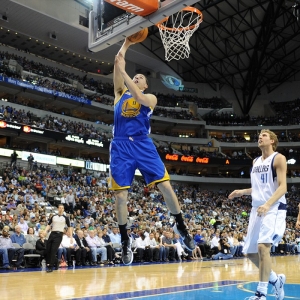
The idea behind the NBA zig-zag theory is a simple, yet powerful concept: in any playoff series bet on the team that lost the last game because they are more likely to cover the next spread. The zig-zag theory first came into prominence in the 1980s and was a moneymaker for bettors for quite some time. But, of course, like any good theory, the sportsbooks eventually caught on and adjusted their lines to take that concept into account.
However, the general idea remains the same. When a team loses during a playoff game, the onus is on them to make the proper adjustments, and many times those moves will result in a closer game at the very least. The zig-zag theory isn't necessarily a profitable play over the long term, but taking the concept into account during your handicapping process can lead to improved betting. Since the 2016 NBA playoffs are set to start on Saturday, let's take a closer look at the zig-zag theory and how to use it during a seven-game playoff series.
NBA Zig-Zag Theory Stats and Trends
Historically the zig-zag theory has seen its biggest edge come in Games 2 and 3, where the wager has covered 54.7 and 55.1 percent of the time since 1991, while the other games all hover around the break-even mark. The idea is that the home team typically wins Game 1, the lower seed will make an adjustment and keep the next game close (even if they lose) and they will come back strong for Game 3 when the series moves to their city. Teams rarely come back from a 3-0 deficit, which makes Game 3 a must-win for a lower seed that has already lost the first two games in a series.
Those numbers, however, have taken a sharp decline since 2001 when the oddsmakers really started to adjust their spreads because of the theory. Over the last 15 years the zig-zag theory has essentially been a break-even wager for every game in a series. However, according to various online stats, the one area where the zig-zag theory remains profitable is with a second-round double-digit underdog coming off a SU or ATS loss. Those situations have gone 33-18-2 for a 64 percent win rate since 1991, which also means they happened twice every postseason (53 times in a 25-year span), so keep a look out for those spots.
NBA Zig-Zag Theory Tips and Conclusion
There are no foolproof and 100 percent profitable theories or systems in sports, otherwise everyone would be rich and the sportsbooks out of business. The best way to wager on the NBA playoffs is with solid handicapping, studying, and a bit of good fortune. However, understanding which situations could be profitable is also a huge key to success. The zig-zag theory might not be a perfect system, but understanding its concepts, particularly lower seeds playing better in Games 2 and 3 after a loss, is something we can all factor into our betting.
Doc's NBA handicapping team is offering $60 worth of member's predictions absolutely free - no obligation. You can use this $60 credit any way you please with any of our top NBA handicappers free here. Also, for a limited time only, you can get three handicappers NBA picks for the price of one! Click Here for more details!
Read more articles by George Monroy
Most Recent NBA Handicapping
- NBA Players Who Transformed Their Career After a Trade
- Top 5 NBA Players Who Should’ve Stayed With Their Original Team
- NBA Betting: Atlanta Hawks Season Long Handicapping 12/23/2025 vs. Chicago Bulls
- NBA Betting Trends Analysis and Expert Handicapping 12/22/2025
- Hot and Cold NBA Betting Teams ATS and Over Under 12/22/2025
- NBA Betting: Atlanta Hawks Season Long Handicapping 12/19/2025 vs. San Antonio Spurs
- NBA Betting: Atlanta Hawks Season Long Handicapping 12/18/2025 vs. Charlotte Hornets
- NBA Players Who Would’ve Been Great in Any Era
- 5 NBA Players Who Played for a Record Number of Teams
- NBA Betting: Atlanta Hawks Season Long Handicapping 12/12/2025 vs. Detroit Pistons
